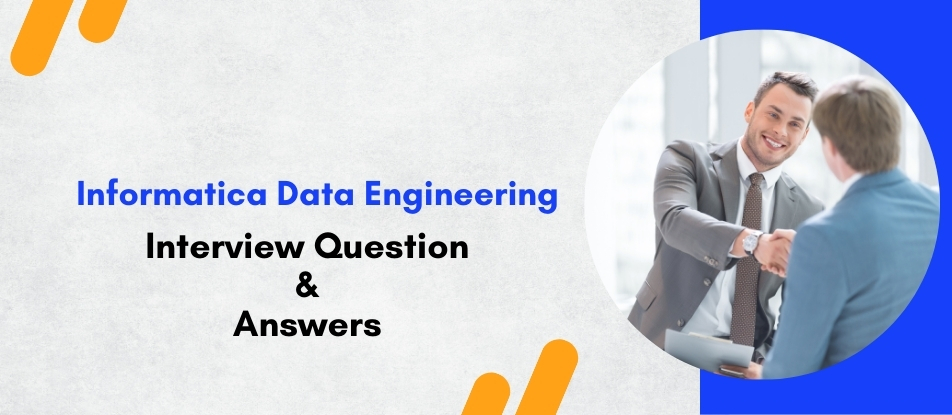
The Informatica Data Engineering course equips learners with advanced skills in big data integration, real-time processing, and cloud-native data pipelines. It explores key concepts like data ingestion, transformation, orchestration, and performance tuning using Spark, Hadoop, and modern cloud platforms. Participants gain hands-on experience with metadata management, data quality, and governance tools to build scalable, secure, and automated workflows. Designed for data engineers and architects, the course bridges theory with practical implementation for enterprise-grade data engineering solutions.
Informatica Data Engineering Training Interview Questions Answers - For Intermediate
1. What is the architecture of Informatica Data Engineering?
The architecture typically consists of source systems, the Informatica Domain, data processing engines such as Spark or Hadoop, metadata repositories, and target systems. It also includes services for monitoring, scheduling, and security, ensuring scalable and fault-tolerant data pipelines.
2. How does Informatica Data Engineering handle unstructured data?
It integrates with big data ecosystems such as Hadoop Distributed File System (HDFS) and NoSQL databases, enabling ingestion, parsing, and transformation of unstructured formats like JSON, XML, Avro, and Parquet before loading into analytics or storage platforms.
3. Explain the role of Informatica Developer Tool in Data Engineering.
The Informatica Developer Tool is a graphical interface used to design, build, and manage data pipelines. It allows developers to configure mappings, workflows, and transformations while providing debugging and performance tuning capabilities.
4. How does partitioning improve performance in Informatica Data Engineering?
Partitioning splits large datasets into smaller chunks for parallel processing, significantly improving throughput. Informatica supports hash, range, and round-robin partitioning to balance workloads across cluster nodes efficiently.
5. What is dynamic mapping in Informatica Data Engineering?
Dynamic mapping allows parameterization of sources, targets, and transformations, enabling a single mapping to process different datasets or environments without redesigning the pipeline each time.
6. How does Informatica Data Engineering integrate with APIs and web services?
It provides connectors and REST/SOAP capabilities for ingesting data from APIs and web services. This helps integrate external data sources, SaaS applications, and third-party systems seamlessly into data pipelines.
7. Explain the concept of pushdown optimization in a Spark environment.
In Spark environments, pushdown optimization pushes transformation logic directly into the Spark engine, reducing the need to extract and move data. This approach leverages Spark’s in-memory processing power for improved pipeline performance.
8. What is the difference between mapping and workflow in Informatica Data Engineering?
A mapping defines the data flow and transformation logic, while a workflow orchestrates execution by managing mapping tasks, scheduling, dependencies, and error handling in a complete ETL pipeline.
9. How is error handling managed in Informatica Data Engineering pipelines?
Error handling is managed through built-in error logging, exception handling transformations, and recovery mechanisms that allow pipelines to skip bad records, retry tasks, or redirect failed data for further analysis.
10. How does Informatica Data Engineering support data lineage?
The platform automatically captures metadata to provide end-to-end data lineage. This allows users to trace data flow from source to target, ensuring transparency, compliance, and impact analysis during schema or process changes.
11. What is the significance of the Metadata Manager in Informatica Data Engineering?
Metadata Manager stores and manages technical, business, and operational metadata. It helps maintain consistency, supports impact analysis, and provides visibility across data assets for better governance.
12. How does Informatica Data Engineering integrate with machine learning workflows?
It connects with platforms like Databricks, AWS SageMaker, and Azure ML, enabling data preparation and feature engineering for ML models while maintaining automation and data quality standards.
13. How is performance tuning achieved in Informatica Data Engineering?
Performance tuning is achieved through partitioning, pushdown optimization, caching, parallelism, and using efficient file formats such as Parquet or ORC. Monitoring tools also help identify bottlenecks for further optimization.
14. What is the role of containers in Informatica Data Engineering deployment?
Containers, such as Docker, package Informatica services and dependencies for consistent deployment across environments. Combined with Kubernetes, they enable scalability, high availability, and simplified DevOps automation.
15. How does Informatica Data Engineering support CI/CD pipelines?
It integrates with DevOps tools like Jenkins, Git, and Azure DevOps to automate deployment, version control, and testing of data pipelines, ensuring faster and more reliable releases.
Informatica Data Engineering Training Interview Questions Answers - For Advanced
1. How does Informatica Data Engineering manage data lakehouse architectures?
Informatica Data Engineering supports data lakehouse architectures by integrating structured, semi-structured, and unstructured data into unified pipelines that feed both data lakes and data warehouses. It enables ingestion from streaming and batch sources, applies transformations using Spark or native cloud compute, and stores curated datasets in formats optimized for analytics. With native connectors to platforms like Delta Lake, Snowflake, and Databricks, Informatica ensures ACID compliance, schema evolution, and performance tuning within lakehouse environments. This hybrid approach enables businesses to benefit from low-cost storage in data lakes while retaining high-performance analytics capabilities associated with data warehouses.
2. How does Informatica Data Engineering enable metadata-driven automation?
Metadata-driven automation in Informatica Data Engineering uses technical, business, and operational metadata to drive pipeline configurations, schema mapping, and lineage tracking automatically. Instead of hardcoding transformation logic, pipelines leverage reusable metadata templates that adapt dynamically to changing sources and targets. Informatica’s Enterprise Data Catalog and CLAIRE AI engine enhance this automation by discovering metadata patterns, suggesting transformation rules, and auto-generating data mappings. This reduces manual development effort, accelerates pipeline deployment, and ensures consistency across multiple data engineering projects.
3. How does Informatica Data Engineering support distributed transaction management?
In complex data ecosystems, distributed transaction management ensures atomicity and consistency across multiple systems. Informatica Data Engineering supports this by integrating with distributed storage and processing platforms that provide transactional capabilities, such as Delta Lake for ACID transactions and Kafka for exactly-once delivery guarantees. The platform’s checkpointing, error recovery, and idempotent data delivery mechanisms ensure data integrity even in failure scenarios, enabling reliable processing across hybrid and multi-cloud environments.
4. What strategies are used for incremental data processing in Informatica Data Engineering?
Incremental processing strategies involve identifying and processing only new or changed records since the last pipeline execution. Informatica supports techniques such as Change Data Capture (CDC), watermarking for streaming sources, and metadata-based delta detection for batch pipelines. These strategies reduce processing time, minimize compute costs, and prevent duplicate data ingestion. When combined with partitioned storage in cloud data lakes and efficient file formats, incremental pipelines significantly improve performance in large-scale data engineering workloads.
5. How does Informatica Data Engineering handle multi-tenant data environments?
Multi-tenant environments require logical data isolation, secure access control, and resource allocation for different business units or clients. Informatica Data Engineering achieves this through role-based access control, encryption, and containerized deployments that segregate workloads. Metadata tagging and data masking techniques provide further isolation for sensitive data, while workload management features allocate cluster resources dynamically based on tenant-specific priorities. This ensures both security and cost efficiency in shared data infrastructure environments.
6. How does Informatica Data Engineering integrate with modern data mesh architectures?
Informatica Data Engineering aligns with data mesh principles by enabling domain-oriented data ownership, self-service pipelines, and federated governance. Through APIs, metadata cataloging, and distributed processing, it allows business domains to create, manage, and publish data products autonomously while adhering to enterprise-wide governance standards. Integration with data catalogs, lineage tools, and CI/CD workflows ensures that data products remain discoverable, reliable, and interoperable across the organization, supporting the decentralized nature of data mesh architectures.
7. What role do Kubernetes and containerization play in Informatica Data Engineering?
Kubernetes and containerization provide scalable, portable, and fault-tolerant deployments for Informatica Data Engineering workloads. By packaging data pipelines and dependencies into Docker containers, Informatica ensures consistency across development, testing, and production environments. Kubernetes orchestrates these containers, enabling auto-scaling, rolling upgrades, and workload isolation. This cloud-native approach reduces infrastructure overhead, accelerates pipeline deployment, and supports hybrid and multi-cloud strategies by running identical workloads on any Kubernetes-supported environment.
8. How does Informatica Data Engineering support data observability?
Data observability involves monitoring data quality, pipeline performance, and system health in real time. Informatica Data Engineering integrates with monitoring platforms like Datadog, Prometheus, and Grafana to provide metrics on data freshness, schema changes, error rates, and pipeline latency. Automated alerts notify teams about anomalies, while CLAIRE AI assists in root-cause analysis by correlating metadata, transformation logic, and pipeline execution history. This ensures proactive resolution of issues, reducing downtime and improving data reliability.
9. How are advanced data security requirements implemented in Informatica Data Engineering?
Advanced security features include field-level encryption, tokenization, and dynamic data masking to protect sensitive information during ingestion, processing, and delivery. Informatica integrates with enterprise identity providers through SAML, LDAP, and OAuth for authentication and role-based access control. Integration with Key Management Systems (KMS) ensures secure handling of encryption keys, while audit logs provide traceability for compliance with standards such as GDPR, CCPA, and HIPAA. These measures collectively ensure end-to-end data security in hybrid and multi-cloud ecosystems.
10. How does Informatica Data Engineering manage polyglot persistence scenarios?
Polyglot persistence involves using multiple storage systems—such as relational databases, NoSQL stores, and cloud object storage—for different data workloads. Informatica Data Engineering provides native connectors and dynamic schema handling to integrate with diverse systems like MongoDB, Cassandra, Snowflake, and Amazon S3. Transformation pipelines can join, cleanse, and enrich data across these heterogeneous sources before delivering it to analytics or operational systems. This flexibility allows enterprises to choose the best-fit storage technology for each data type and use case.
11. How does Informatica Data Engineering enable reusable pipeline components?
Reusable pipeline components are achieved through parameterization, shared mappings, and template-driven designs. Informatica allows developers to define parameter files for source paths, connection details, and transformation logic, enabling the same pipeline to run across multiple environments or datasets. Reusable transformation libraries and mapping templates reduce redundancy, improve maintainability, and accelerate development cycles, especially in large enterprise data engineering projects with repetitive processing requirements.
12. How does Informatica Data Engineering integrate with data cataloging and lineage tools?
Integration with Informatica Enterprise Data Catalog and third-party tools like Collibra and Alation ensures that every dataset and pipeline is automatically documented with metadata, lineage, and business context. This metadata-driven approach enables users to trace data flow from source to consumption, understand data transformations, and assess the impact of schema or process changes. Combined with CLAIRE AI, catalog integration enhances discoverability and trust in enterprise data assets while supporting governance and compliance initiatives.
13. What is the role of pushdown optimization in modern big data pipelines?
Pushdown optimization delegates transformation logic to underlying processing engines such as Spark, Snowflake, or cloud-native SQL engines. By executing transformations close to the data storage layer, it minimizes data movement, reduces ETL overhead, and leverages the parallel processing power of the target system. Informatica Data Engineering supports full, partial, and source-side pushdown modes, enabling flexible optimization strategies for both batch and real-time pipelines. This improves performance while reducing infrastructure costs.
14. How does Informatica Data Engineering manage high-availability deployments?
High-availability deployments rely on clustering, load balancing, and fault-tolerant architectures. Informatica Data Engineering uses Kubernetes auto-healing, redundant service nodes, and distributed storage systems to eliminate single points of failure. Workload failover mechanisms ensure that processing continues even if individual nodes fail, while rolling updates and blue-green deployments minimize downtime during upgrades. This guarantees continuous availability for mission-critical data pipelines across hybrid and cloud environments.
15. How does Informatica Data Engineering support event-driven architectures?
Event-driven architectures rely on real-time triggers from data sources, applications, or message queues. Informatica integrates with Kafka, Azure Event Hubs, and AWS Kinesis to capture streaming events, apply in-flight transformations, and deliver processed data to downstream systems or analytics platforms. Combined with micro-batch processing, checkpointing, and automated error handling, Informatica enables low-latency, event-driven pipelines that power real-time dashboards, fraud detection systems, and operational intelligence applications.
Course Schedule
| Dec, 2025 | Weekdays | Mon-Fri | Enquire Now |
| Weekend | Sat-Sun | Enquire Now | |
| Jan, 2026 | Weekdays | Mon-Fri | Enquire Now |
| Weekend | Sat-Sun | Enquire Now |
Related Courses
Related Articles
- Learn Microsoft Azure Fundamentals (AZ-900) with Best Azure Course Online
- Why Choose Mainframe Cobol Training for a Stable IT Career?
- Finance Role with SAP S4 HANA Group Reporting Certification
- Configuring Microsoft Dynamics 365 Commerce: Best Practices and Key Concepts
- Master SailPoint IdentityIQ and Elevate Your Identity Management Skills!
Related Interview
Related FAQ's
- Instructor-led Live Online Interactive Training
- Project Based Customized Learning
- Fast Track Training Program
- Self-paced learning
- In one-on-one training, you have the flexibility to choose the days, timings, and duration according to your preferences.
- We create a personalized training calendar based on your chosen schedule.
- Complete Live Online Interactive Training of the Course
- After Training Recorded Videos
- Session-wise Learning Material and notes for lifetime
- Practical & Assignments exercises
- Global Course Completion Certificate
- 24x7 after Training Support


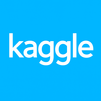
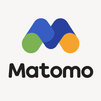
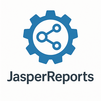
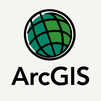
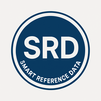
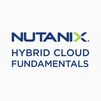


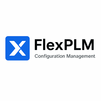



 Join our Live Instructor-Led online classes delivered by industry experts
Join our Live Instructor-Led online classes delivered by industry experts